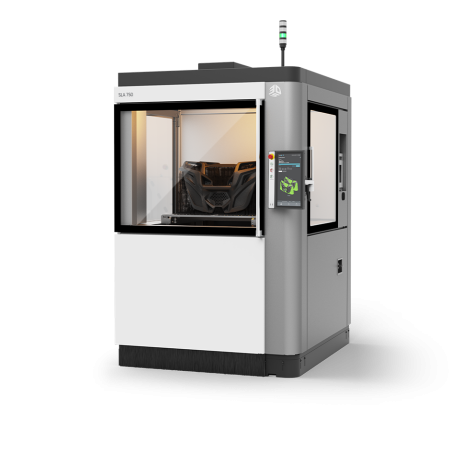The Challenge:
The aerodynamic engineering team from Stewart-Haas Racing and other NASCAR Ford race teams needed a way to test hundreds of different body panel shapes to determine the best-performing aerodynamic shape for the new 2024 NASCAR Ford Mustang Dark Horse. This NASCAR submission project involved numerous, full-scale wind tunnel tests over a time frame of many months. Since wind tunnel testing at full scale is expensive, what is the most efficient way to be able to test dozens of different body panel shapes during each test session?
The Solution:
When submitting a new race car body shape to NASCAR, the Ford race teams needed to meet specific aerodynamic coefficient specifications as determined by NASCAR. At the end of the project, this is ideally achieved during a full-scale, wind tunnel test of the car body being submitted. For the final submission test to be successful, the following development process occurred.
- Body panel shapes are tested using CFD software.
CFD (Computational Fluid Dynamics) analysts design multiple body panel shape concepts in CAD software. These concepts represent various shapes that will potentially improve the aerodynamic performance of the race car. These surface models are then processed using CFD software that represents a virtual wind tunnel to test the aerodynamic coefficients of these surface models. The results are analyzed and the concepts that show a favorable performance potential are identified as concepts to be tested in the full-scale wind tunnel.
- Convert the CFD surfaces to solid CAD models for 3D printing.
Design engineers then convert the CFD surface models to solid CAD models that can be 3D printed. The solid surface models are divided into reasonable sized tiles that when printed and assembled represent the shape of original CFD surface model. These tiles are designed to be attached to a sub frame of the chassis on the full-scale car to be tested in the wind tunnel.
- Print parts using 3D Systems’ SLA printers.
These solid CAD models are then sent to be 3D printed either internally at Stewart-Haas Racing, to Ford’s Additive Manufacturing Center in Dearborn, MI, or to an outside printing service. The 3D printing technician then orients the CAD models in 3D Systems’ 3D Sprint® software to position them the way they need to be printed. The files can be oriented to minimize the printing time, maximize the printing quality, and maximize part quantity per build platform. The 3D Systems’ 3D Sprint software is intuitive to use and enables the technician to quickly set up the CAD models to be printed.
The resulting file can then be sent to the ProX 800, SLA machine for fast, accurate printing of the parts in the desired material. 3D Systems offers many different materials some of which were specifically developed for printing parts for wind tunnel testing. This results in parts that have a smooth surface finish which is vital for wind tunnel testing. For submission projects like this, it is common to print hundreds of large parts. The reliability of the 3D Systems’ SLA machines is key when printing this many parts. Often these parts are being printed just in time to be tested in the wind tunnel, so it is important the SLA machines are reliable. The 3D Systems SLA machines are workhorses that will print parts 24/7 with minimal maintenance required.
- Assemble the 3D printed parts onto the tunnel test car.
The 3D-printed parts can then be fastened to the sub-structure of the full-scale car. In this way, the entire car body shape can be defined by these 3D-printed tiles. The resulting body shape can then be 3D scanned to verify that the 3D-printed shape equals the original CFD surface file shape.
- The car is tested in the wind tunnel.
As the car is being tested in the wind tunnel, additional, 3D-printed tiles may be added to and removed from the car to test the various concepts that are under development. Each “run” represents a concept being tested, and the resulting aerodynamic coefficients are recorded and analyzed. Some concepts improve the aerodynamic performance of the car’s body, and some do not. In this way, the aerodynamic engineers are able to optimize the shape of the car’s body to perform the best when on the racetrack in the future.
Repeat steps 1 – 5 until the car satisfies the aerodynamic coefficient specifications for submission.
Many months, many printed parts, and many wind tunnel tests later, the car is ready for the final submission wind tunnel test with NASCAR. In this submission test, provided the body panel shapes pass the aerodynamic coefficient specifications, the shape of the body is submitted to NASCAR as the final race car body shape for the 2024 NASCAR Ford Mustang Dark Horse.- Produce production body panels.
Design engineers then convert the solid CAD models that represent the final submission body shape to CAD surfaces that are the final body panel sizes for production. These production files are then sent to various carbon fiber suppliers to produce the carbon fiber body panels which will be used for racing during the 2024 racing season.
The Results:
3D Systems’ 3D Sprint software and 3D printing SLA machines are the right tools for completing submission projects like this with successful results. These tools and the development process they are used in yield a race car body for the Ford Mustang Dark Horse race car that looks like the 2024 production car but has the aerodynamic performance for the Ford team’s race cars to win races and a NASCAR Cup Series championship!
